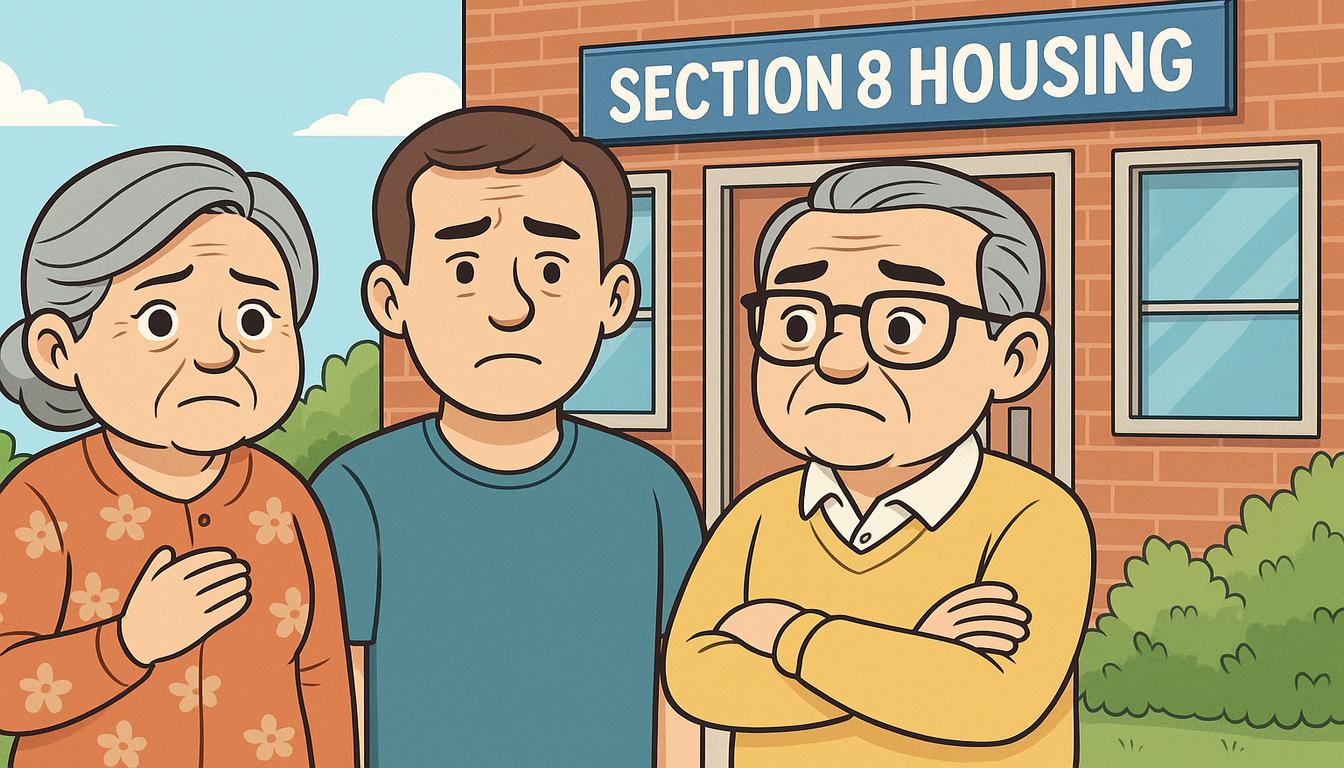How State Housing Programs Are Expanding to Help Families — Beyond Section 8

When most people think about housing help, the first program that comes to mind is Section 8 (Housing Choice Vouchers). It’s the federal program that helps families rent in the private market by paying part of the monthly rent directly to landlords. But Section 8 isn’t the only solution anymore.
Across the country, state governors are creating their own housing programs. These programs are different from Section 8 because instead of just helping with rent, many of them focus on building new homes, fixing old properties, and even helping families buy houses. That means more ways for people to find a safe and affordable place to live.
This article explains some of the biggest state housing program expansions happening right now, how they compare with Section 8, and what you can do to take advantage of them.
1. California: Turning Empty State Land Into Homes
In California, Governor Gavin Newsom is tackling the housing crisis by opening up unused government land. Through the Excess Sites Program, land that once held state offices, parking lots, or other facilities is being transformed into affordable housing.
Recently, Newsom expanded the program to include 23 new sites. Developers can now use a new web portal to make bids more quickly, cutting through years of red tape. Officials say this could lead to around 2,000 new affordable homes in California.
Read more about Governor Newsom’s housing expansion in California.
Why it matters for families:
- Land is one of the biggest costs in building homes. By offering land the state already owns, California makes it cheaper to build.
- Faster bidding means more projects can get started quickly.
- Families who qualify for affordable housing programs could see more units open in high-demand cities like Los Angeles, San Francisco, and Sacramento. Tip: If you live in California, keep an eye on your local housing authority’s website. Many of these new homes will be listed there once construction is underway.
2. Washington State: A Massive Investment in Affordable Rentals
Washington State is making one of the largest housing investments in its history. Governor Bob Ferguson announced $212 million in new funding through the Housing Trust Fund and other programs. Over two years, the state plans to spend $419 million total on affordable housing.
This money is aimed at building new apartments, fixing up older ones, and supporting housing for people with very low incomes, disabilities, or those leaving homelessness.
Developers and nonprofits can apply for these funds, but there’s a deadline: October 16, 2025. Learn more from the Washington Governor’s announcement.
Why it matters for families:
- The funding will help create new affordable rentals across the state.
- It will also keep older affordable properties from falling into disrepair.
- Families with extremely low income—who often don’t qualify for other rental programs—will have more options. FAQ: Can I apply directly for this money? No. The funding goes to developers and nonprofits. But once the housing is built or renovated, you can apply to live there through your local housing authority.
3. Connecticut: Helping Families Buy Homes
While some states focus on rentals, Connecticut is trying to boost homeownership. Governor Ned Lamont announced a $30 million program designed to help families buy and fix up homes in neighborhoods that need investment.
The plan includes:
- $8.5 million in low-interest loans to help families make repairs,
- $10 million for home rehabilitation projects,
- $11.5 million in grants for nonprofits and small builders who create housing.
Read details about Connecticut’s homeownership program here.
Why it matters for families:
- Owning a home provides stability and a chance to build wealth over time.
- Repairs and rehab money mean older homes can become livable again.
- Families who may not have been able to buy before now have new pathways. Tip: If you’re in Connecticut, check with your local community development office. Many of these programs partner with city housing departments to reach residents.
4. Colorado: Tying Grants to Housing Reforms
Colorado is taking a bold approach by offering $280 million in grants to cities and towns—but only if they agree to update housing rules.
Governor Jared Polis says the state can’t solve its housing shortage unless local governments allow more building. To get the money, towns need to approve policies like:
- Allowing Accessory Dwelling Units (ADUs) (small apartments or backyard cottages),
- Reducing parking requirements,
- Building more housing near public transportation.
Some cities support the idea, while others are suing the state. But the pressure is clear—change zoning rules, or lose out on big funding.
Read more in Axios’ report on Colorado’s housing reforms.
Why it matters for families:
- ADUs can provide affordable rentals for seniors, students, or single parents.
- Building near transit means lower transportation costs for families.
- Local governments that adopt these changes will see faster housing growth. FAQ: What is an ADU? It’s a small, separate living unit on the same property as a main home. Examples include a basement apartment, a garage turned into a studio, or a small cottage in the backyard.
5. Michigan: Updating Housing Loans and Policies
Michigan is modernizing its housing programs with new laws signed by Governor Gretchen Whitmer. These changes improve the Michigan State Housing Development Authority (MSHDA) by:
- Raising the cap on loan purchase prices,
- Allowing more flexibility in managing debt,
- Offering more support for first-time homebuyers.
See more details in this article about Michigan’s new housing laws.
Why it matters for families:
- First-time homebuyers will have an easier time qualifying for help.
- Families looking to build or buy homes can access larger loans.
- The changes make housing programs run more smoothly. Tip: If you’re in Michigan and thinking of buying your first home, ask your lender about MSHDA loan options.
6. Massachusetts: A $4 Billion Housing Plan
Massachusetts is aiming big. Governor Maura Healey introduced a $4 billion housing plan to make housing more affordable across the state. This plan includes money for building, renovating, and keeping rents lower.
Read more in this AP News report about Massachusetts’ housing plan.
Why it matters for families:
- A major investment means more affordable homes across cities and towns.
- It shows housing is a top priority at the highest level.
- Could set an example for other states.
How State Programs Compare to Section 8
Section 8 remains a critical federal program, but it has limits:
- It doesn’t build new homes, it only subsidizes rent.
- Many families face years-long waitlists.
- It can only help a certain number of families at a time.
State programs are filling the gaps by:
- Building housing (California, Washington),
- Promoting homeownership (Connecticut, Michigan),
- Changing zoning laws (Colorado),
- Investing billions into statewide affordability (Massachusetts).
These local programs are not replacements—they’re extra tools that give families more options.
What You Can Do Next
If you’re looking for housing help, here are a few steps to take:
- Find your state housing agency. Every state has one, and their website usually lists new programs.
- Check application deadlines. Washington’s $212M rental program has an October 2025 deadline. Other states may have rolling applications.
- Talk to local nonprofits. Many receive grants from these state programs and can connect you to opportunities.
- Don’t give up on Section 8. Even if your name is on a waitlist, state programs could help while you wait.
- Keep learning. Blogs like Section 8 Search or Affordable Housing Heroes explain housing programs in plain language so you can find the right path.
Final Thoughts
Housing is one of the biggest challenges families face today. While Section 8 provides vital support, state programs are stepping up with new approaches—using land, reforming rules, offering grants, and investing billions.
The bottom line? If you’re searching for housing, look at both federal and state options. Together, they can open more doors than ever before.
👉 Still waiting for Section 8? It's important to stay proactive while you’re on the list. That’s why we recommend reading our guide on how to check your Section 8 status and what to do while you wait. It walks you through exactly how to track your application, respond to alerts, and avoid mistakes that could slow your progress.
Navigating the Section 8 housing process can feel overwhelming, and that's where Section 8 Search comes in. We're more than just a listing website; we're a dedicated resource designed to make finding housing under the Housing Choice Voucher Program straightforward and stress-free. Our platform offers user-friendly tools to explore listings and waiting list statuses nationwide, all built on official HUD data. We're also passionate about providing clear, helpful information and guidance, empowering you with the knowledge you need to understand eligibility, complete your application, and confidently navigate your housing journey.

.png)
.png)
.png)





.png)
.png)
.png)
.png)
.png)
.png)
.png)




